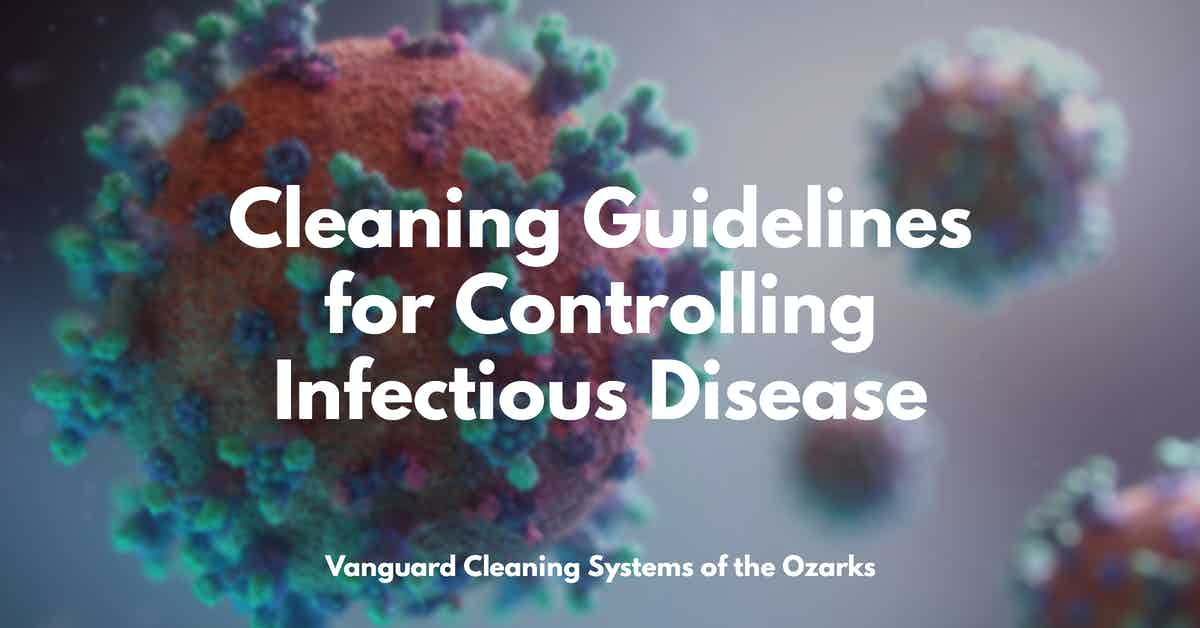Controlling the spread of infectious disease is a multi-stage process--at the heart of which is consistent high-performance cleaning processes--requiring proactive and responsive actions by stakeholders at every level.

Controlling the Spread of Infectious Disease
Surfaces in public facilities serve as reservoirs for infectious disease.
Facility occupants touch the surfaces with their hands, then;
- Touch their face, eyes, nose, and mouth, infecting themselves;
- Touch other surfaces and contaminate them, and;
- Touch other people, infecting them.
While hand hygiene plays a critical role in preventing the spread of infectious disease, routine surface cleaning and disinfection are paramount for eliminating the presence of the disease on the surfaces that host them.
According to the U.S. Centers for Disease Control and Prevention;
Although microbiologically contaminated surfaces can serve as reservoirs of potential pathogens, these surfaces generally are not directly associated with the transmission of infections to either staff or patients.
The transferral of microorganisms from environmental surfaces to patients is largely via hand contact with the surface.
Although hand hygiene is important to minimize the impact of this transfer, cleaning and disinfecting environmental surfaces as appropriate is fundamental in reducing their potential contribution to the incidence of healthcare-associated infections.
Guidelines for Environmental Infection Control in Health-Care Facilities (2003)
Factors Determining the Cleaning and Disinfection Process
The COVID-19 pandemic taught us that facility cleaning and disinfection services do not fit into a one-size-fits-all paradigm.
Solutions must be tailored to fit the needs of the facility and the facility occupants while taking into consideration:
- The type of surface being cleaned and disinfected.
- The number--whether known or hypothesized--of germs and bacteria being removed.
- Any resistance those microorganisms may have to cleaning and germicidal products.
- The presence and volume of organic soil.
- The amount and concentration of germicidal disinfectant to be used.
- Disinfectant dwell time and temperatures, and;
- The use of any proprietary products, such as those used with electrostatic-disinfection appliances.
Progressive Stages of Environmental Cleaning and Disinfection
Once the environment has been assessed, selecting the ideal environmental cleaning and disinfection procedure is relatively simple.
In general, the procedures are divided into three progressively more intense stages.
- General Cleaning & Disinfecting - Completed at least once per day for all occupied spaces using a neutral soap-based, commercial-grade detergent, and a U.S. Environmental Protection Agency-approved disinfectant. Used for regular facility maintenance to ensure occupant health and protect the built environment.
- Enhanced Cleaning & Disinfection - Performed multiple times per day in all occupied facility spaces with a focus on increased targeted fomite disinfection with specialized germicidal products. Used to combat localized outbreaks and the rise in reported infections within a specific facility or geographic region.
- Terminal Cleaning & Disinfection - Deep cleaning and disinfection of all surfaces using hospital-grade detergents and disinfectants. The room or facility, including all equipment, structures, surfaces, and furniture, is expertly scrubbed from top to bottom with the detergent, then fully disinfected. Typically reserved for surgery rooms and centers, but commonly leveraged in the event of a highly contagious outbreak in any facility.
References & Resources
Takeaway
Facility surface cleaning and disinfection are critical to public health and safety in the prevention of deadly infectious diseases, such as Influenza, SARS-CoV-2, Ebola, and EV-D68.
While protocols, such as:
- Hand hygiene,
- Social distancing, and
- Vaccination
can play a part in ending widespread outbreaks, cleaning remains the front line defense against the spread and transmission of current and future deadly germs and bacteria.
According to the ISSA;
Cleaning plays a critical role in protecting human health by preventing the transmission of an ever-growing array of harmful, and in some cases, deadly infectious diseases.
Recent infections in the media include coronavirus, Influenza A, Enterovirus D68, and Ebola.
These and other similar outbreaks provide the opportunity to educate [...] the public about the true value of cleaning as the first line of defense against the spread of infectious agents.
Outsourcing to an experienced provider is a proven method for onboarding critical infection prevention and control services as part of a greater facility cleaning subscription service at a fraction of the cost of maintaining a similar service in-house.
Contact us today and discover why Vanguard Cleaning Systems® is the Standard of Clean® for businesses throughout Northwest Arkansas, Missouri, and Oklahoma.
In Oklahoma, dial 918-960-4450
In Arkansas, dial 479-717-2410
In Missouri, dial 417-812-9777

